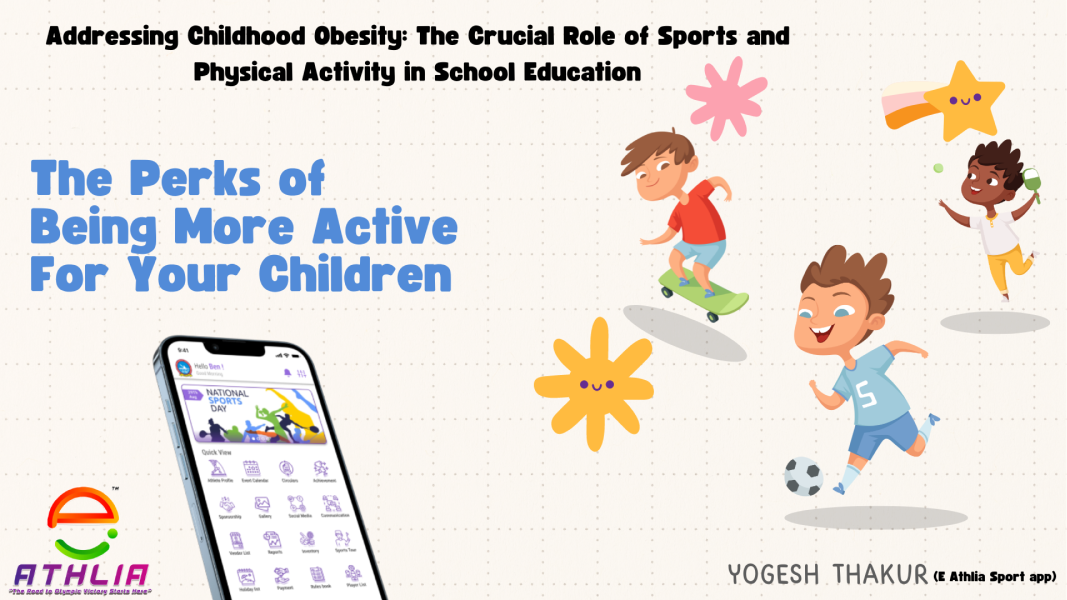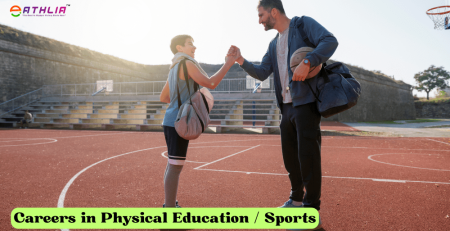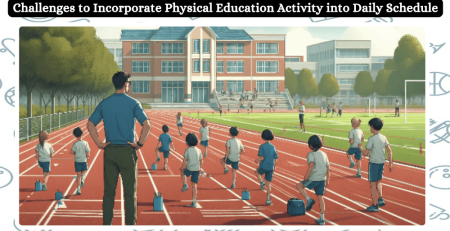
16
Addressing Childhood Obesity: The Crucial Role of Sports and Physical Activity in School Education
In today’s fast-paced digital era, where screens dominate children’s leisure time, childhood obesity has become a growing concern for parents and educators alike. The sedentary lifestyle and poor nutritional choices contribute significantly to this issue. As a professional with expertise in various sports fields and sports education at the primary and secondary school levels in India, I am here to shed light on how sports and physical activity can play a pivotal role in combating childhood obesity and promoting holistic development.
The Sedentary Challenge:
The modern lifestyle, characterized by prolonged hours of screen time and a lack of physical activity, has led to a surge in childhood obesity. Parents are grappling with the challenge of balancing their child’s academic pursuits with maintaining a healthy lifestyle. It’s crucial for us to understand that a sedentary lifestyle not only affects physical health but also hampers cognitive development.
Physical Education (PE) and Its Impact:
The school environment plays a pivotal role in addressing childhood obesity. Incorporating effective Physical Education programs is key to instilling a love for physical activity early on. PE goes beyond just running laps or playing games; it fosters cognitive development, social integration, critical thinking, decision-making, moral reasoning, and leadership roles.
| Cognitive Development | Social Integration | Critical Thinking and Decision Making | Moral Reasoning | Leadership Roles |
| Physical activity has been linked to improved cognitive function. Engaging in sports enhances concentration, memory, and overall academic performance. Schools should integrate sports into their curriculum to ensure a well-rounded development of children. | Sports provide a platform for social interaction. Team sports, in particular, teach children important social skills such as teamwork, communication, and empathy. This integration positively impacts mental well-being, reducing the risk of isolation and promoting a sense of belonging. | Participating in sports requires quick thinking and strategic decision-making. These skills translate beyond the field, aiding children in making better decisions in their academic and personal lives. | Sports often present ethical dilemmas and challenges, fostering moral reasoning. Learning to navigate these situations contributes to the development of a child’s character and ethical decision-making abilities. | In the realm of sports, children have the opportunity to take on leadership roles, whether as team captains or mentors. These experiences lay the foundation for future leaders, instilling confidence and a sense of responsibility. |
Addressing Parental Concerns:
Understanding the concerns of today’s generation parents is crucial. Many may wonder how sports can fit into the rigorous academic schedule or if it genuinely contributes to their child’s overall development. It’s essential to communicate the long-term benefits and dispel myths surrounding sports education.
| Time Management | Holistic Development | Lifelong Healthy Habits |
| Incorporating sports into the school curriculum doesn’t mean compromising academic excellence. In fact, it enhances time management skills, teaching children to balance various aspects of their lives effectively. | Emphasize that sports contribute to holistic development. A physically active child is likely to be more focused, attentive, and perform better academically. It’s not just about scoring goals but scoring high in life. | Encourage parents to view sports not as a separate entity but as a foundation for a healthy lifestyle. The habits instilled through sports, such as regular physical activity and a balanced diet, have lifelong implications for health and well-being. |
Conclusion:
In conclusion, the battle against childhood obesity requires a holistic approach that involves parents, educators, and policymakers. Sports and physical activity in the school environment play a crucial role in shaping healthy habits, fostering cognitive development, and building essential life skills. By addressing the concerns of today’s parents and emphasizing the long-term benefits, we can collectively pave the way for a healthier and more active generation. Let’s empower our children to thrive both academically and physically, setting the stage for a brighter and healthier future.








